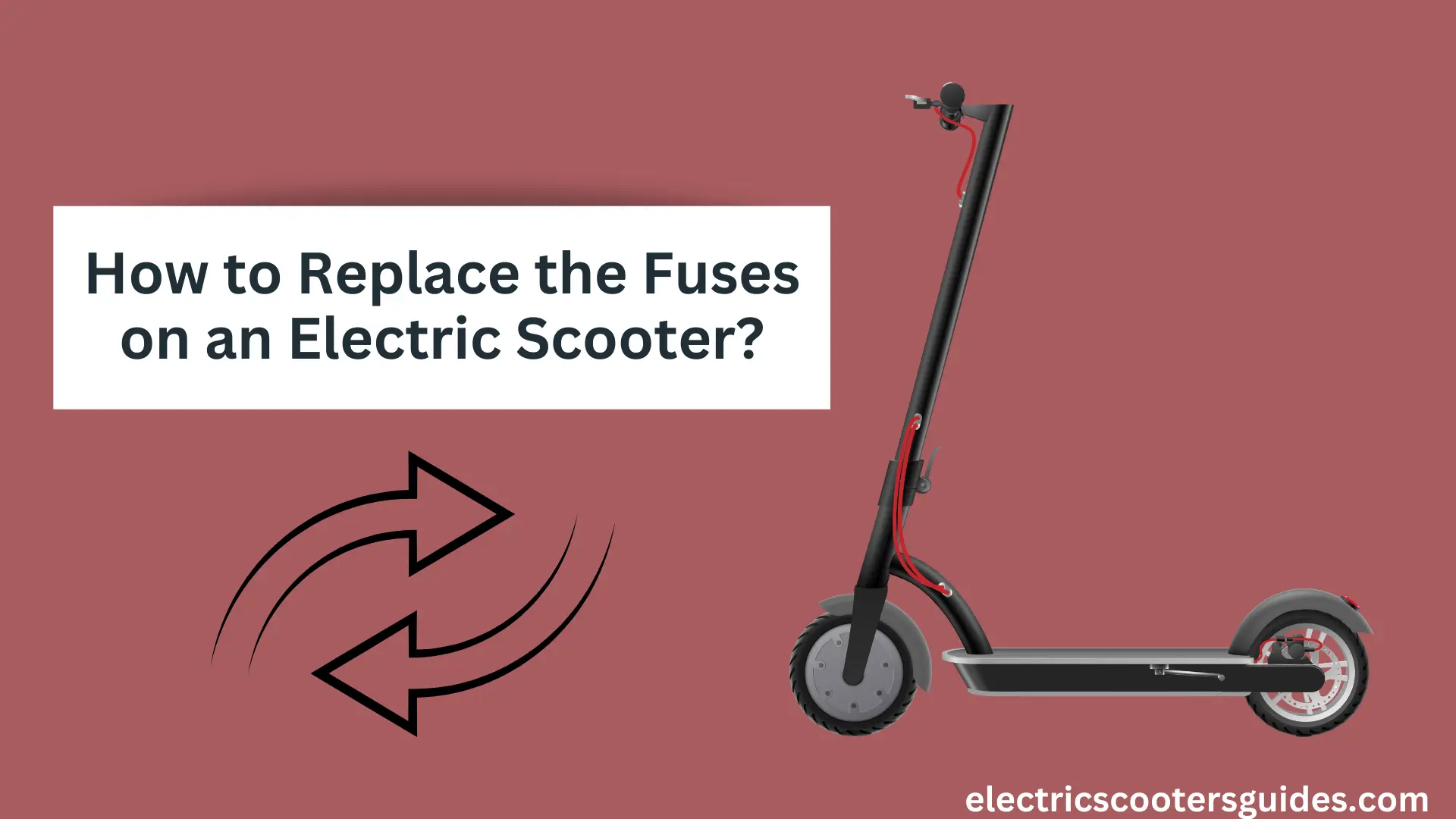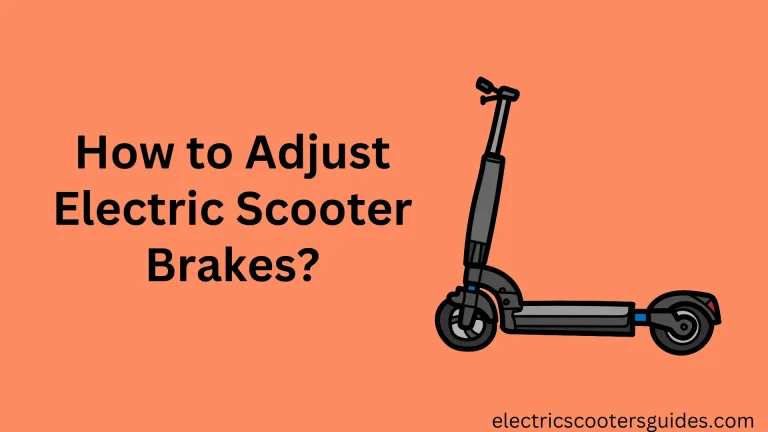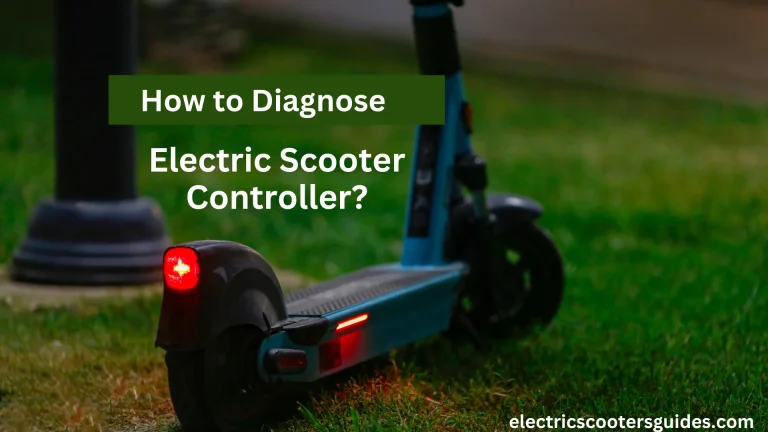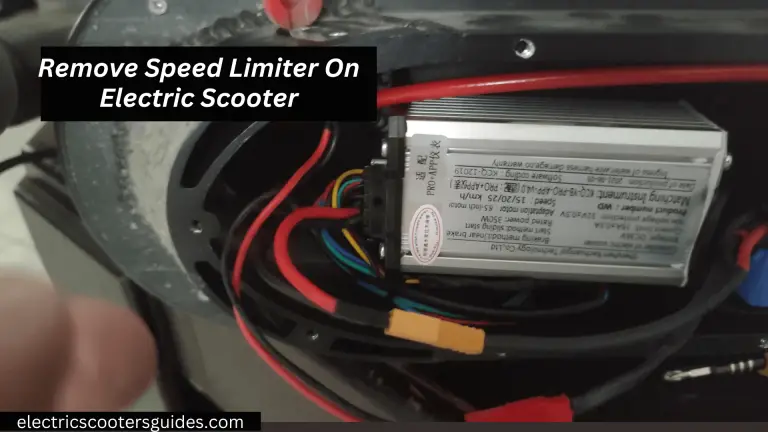How to Replace the Fuses on an Electric Scooter?

Imagine you’re all set to zip around town on your electric scooter, but when you press the power button, nothing happens. Frustrating, right? Well, you’re not alone. This hiccup is a common headache for electric scooter owners.
It’s not just about missing out on a fun ride; it’s also about the mystery behind why your scooter suddenly decided to take a break. What went wrong? And why isn’t there any helpful error code to guide you through fixing it?
But fear not! We’re here to shed some light on one possible culprit: the electric scooter fuse. Yes, that little component can sometimes be the reason behind your scooter’s complete shutdown. But don’t worry, we’ll also walk you through how to replace it.
So, buckle up (figuratively, of course), as we dive into how to replace the fuses on an electric scooter. Let’s get this ride back on track!
Role of the Fuse in Your Electric Scooter
Understanding the role of a fuse in your electric scooter is key before delving into the process of replacing it.
Simply put, a fuse acts as a safety measure to stop too much electric current from flowing through your scooter’s battery. It’s like a traffic cop for electricity, ensuring that only the right amount of power passes through. Each fuse is designed to handle a specific amount of electric current, measured in amperes.
So, if the electric current exceeds the capacity of the fuse, it’s like hitting a red light for the electricity flow. The fuse sacrifices itself by blowing out, preventing any further passage of excessive electric current. This helps protect your scooter’s battery and electrical system from potential damage or even a short circuit.
Causes to Replace the Fuses on an Electric Scooter
There are several reasons why you might need to replace the fuses on your electric scooter. Here are some common causes:
- Blown Fuse: The most obvious reason is if a fuse has blown. This can happen due to a power surge, a short circuit, or if the electrical system is overloaded. When a fuse blows, it interrupts the electrical circuit and needs to be replaced to restore functionality.
- Electrical Issues: If you’re experiencing electrical problems with your scooter, such as lights not working, the motor not running, or other components malfunctioning, a faulty fuse could be the culprit. Replacing the fuse can often resolve these issues and get your scooter back up and running smoothly.
- Wear and Tear: Over time, the fuses in your electric scooter may degrade or become damaged due to normal wear and tear. If you notice signs of wear on the fuses, such as corrosion or a weakened connection, it’s a good idea to replace them preventatively to avoid potential problems down the line.
- Upgrading Components: If you’ve upgraded certain components of your electric scooter, such as the motor or battery, you may need to replace the fuses with ones that can handle higher currents. Using fuses with inadequate ratings for the new components could lead to frequent blowing of the fuses or even damage to the upgraded parts.
- Routine Maintenance: As part of routine maintenance for your electric scooter, it’s a good idea to periodically check the condition of the fuses and replace any that show signs of wear or damage. This helps ensure the continued reliability and safety of your scooter’s electrical system.
How to Replace the Fuses on an Electric Scooter?
Replacing the fuses on your electric scooter is a manageable task with the right guidance. Here’s a simple step-by-step process to help you get it done:
- Safety First: Before starting any work on your scooter, ensure it’s turned off and disconnected from the power source. Safety should always come first.
- Locate the Fuse Box: The fuse box on your scooter is typically located near the battery or the motor controller. Refer to your scooter’s manual if you’re unsure about its exact location.
- Identify the Blown Fuse: Inspect the fuses in the fuse box to identify the blown one. A blown fuse usually has a broken wire inside or appears discolored compared to the others.
- Remove the Blown Fuse: Using a pair of needle-nose pliers, carefully grip the blown fuse and pull it out of the fuse holder. Be gentle to avoid damaging the fuse holder or surrounding components.
- Select a Replacement Fuse: Check the rating (amperage) of the blown fuse and select a replacement fuse with the same rating. Using a fuse with a higher or lower rating could lead to electrical problems or damage to your scooter.
- Install the Replacement Fuse: Insert the new fuse into the empty fuse holder, making sure it fits securely. Avoid forcing it in, as it should slide in easily.
- Test the Scooter: Once the replacement fuse is installed, turn on your scooter and test it to ensure everything is functioning properly. If the fuse blows again immediately, there may be an underlying issue that needs to be addressed.
- Secure the Fuse Box: Once you’ve confirmed that the scooter is working correctly, securely close the fuse box cover to protect the fuses and electrical connections.
By following these steps carefully, you can confidently replace the fuses on your electric scooter, ensuring its continued smooth operation and safety on the road. You should also know how to maximize the electric scooter range.
Maintenance Tips
To keep your electric scooter running smoothly and prevent the need for frequent fuse replacements, here are some maintenance and prevention tips:
- Regular Inspections: Conduct regular visual inspections of your scooter’s electrical components, including the fuse box, wiring, and connections. Inspect for indications of wear, rust, or harm, and promptly attend to any concerns.
- Follow Manufacturer’s Guidelines: Adhere to the manufacturer’s maintenance recommendations outlined in the scooter’s manual. This may include specific intervals for inspecting and replacing fuses, as well as other routine maintenance tasks.
- Use Genuine Parts: When replacing fuses or any other components, always use genuine parts recommended by the manufacturer. Using aftermarket or incompatible parts can compromise the performance and safety of your scooter.
- Avoid Overloading: Be mindful of the electrical load on your scooter and avoid overloading it with accessories or modifications that draw excessive power. Ensure that the components you add are compatible with your scooter’s electrical system and fuse ratings.
- Protect from Moisture: Electric scooters are susceptible to damage from moisture and water exposure. Keep your scooter dry and store it in a sheltered location when not in use. Consider using a waterproof cover if parking outdoors.
- Proper Charging Practices: Follow proper charging practices to avoid damaging the battery or electrical system. Use the charger provided by the manufacturer and avoid overcharging or leaving the scooter plugged in for extended periods.
- Safe Riding Habits: Practice safe riding habits to minimize the risk of accidents and potential damage to your scooter. Avoid rough terrain, excessive speeds, and abrupt stops that could put a strain on the electrical components.
- Educate Yourself: Take the time to educate yourself about your electric scooter’s electrical system and how to troubleshoot common issues. Understanding how your scooter works can help you identify problems early and take appropriate action.
Conclusion
In conclusion, staying on top of fuse maintenance for your electric scooter is vital for its smooth operation and safety. By regularly inspecting and replacing fuses as needed, following manufacturer guidelines, and practicing safe riding habits, you can prevent electrical issues and enjoy worry-free rides. Remember, taking proactive steps to maintain your scooter’s electrical system ensures reliability and extends its lifespan, so you can continue to enjoy the convenience and eco-friendly benefits of electric scooters for years to come.






